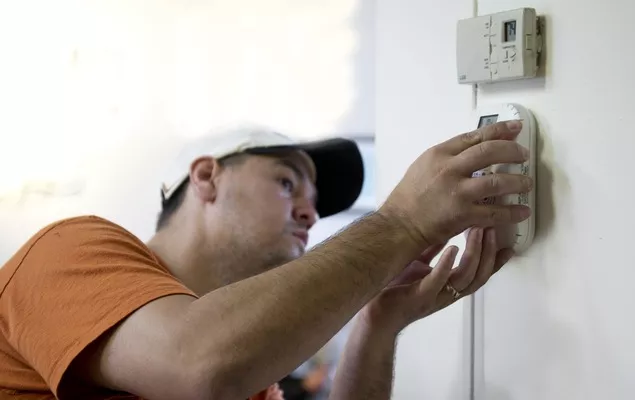
By Cyrus Reed
One of the most groundbreaking aspects of the Inflation Reduction Act signed by President Joe Biden in 2022 is its historic investment in energy efficiency rebates, tax incentives, and programs. Chief among them are two programs known as the HOMES and HEAR program, and Texas recently announced they will apply for these federal funds - a whopping $690 million! And they want your input on how to run these programs!
Okay, what are the HOMES and HEAR programs?
HOMES Rebate Program
The HOMES rebate program incentivizes whole-home retrofits in both single-family and multifamily homes. Efficiency rebates are available to households of any income level, but rebate amounts are doubled for low and moderate-income households. The rebate amounts will be determined based on energy savings using either a modeled or measured savings method. The modeled savings pathway will provide a rebate amount based on the estimated energy savings particular to a home at the time of the retrofit installation. The measured savings pathway will calculate rebates based on the actual energy savings after a certain period following the installation of the retrofit.
Total HOMES Rebate Allocations to Texas: $346,022,980 (Source: Department of Energy)
HEAR Rebate Program
The HEAR program is an appliance rebate program. The U.S. Department of Energy has not determined which specific appliances will qualify, but has indicated they will be ENERGY STAR® certified. Electrification rebates are available only to low or moderate-income (LMI) households, as identified by Area Median Income (AMI). The rebate amounts are set by the IRA and are specifically targeted to LMI households.
Total HEAR Allocations to Texas: $344,006,590 (Source: Department of Energy)
Okay, so does SECO need our help?
SECO has asked community-based organizations like the Sierra Club to reach out to our members and get input on how they should run the program, and what aspects will be important in that effort. To aid in that effort, SECO has opened up two RFIs, or Requests for Information. One is for regular folks - that’s you - that might take advantage of the programs when they become available in 2025, and the other is for organizations and businesses that could potentially partner to help implement the program.
If you are a homeowner, renter, installer, aggregator, industry expert, or potential program partner, SECO kindly requests your input.
The link for the community member survey can be found here. The deadline to submit responses: 2 p.m. Central, October 18, 2024.
Does Sierra Club have ny suggestions on the survey?
The survey takes less than five minutes to complete and you should answer it honestly. Nearly all of the questions pertain to how you might utilize the program and there is only one “policy” question listed. That involves whether you would prefer to see the funds from the program focused more on low-income, hard-to-reach communities, maximizing the amount of rebates they receive, or whether you would prefer that the program reach as many folks as possible. Here’s that actual question from the survey below.
9. Which refund option would you prefer for low-income, disadvantaged communities?
Recipients are refunded maximum amount, lowering barriers to participate.
Recipients are refunded lesser amounts, so more individuals may be awarded.
In the organizational survey, Sierra Club will be choosing the first option. Why? Stated simply, households at 200 percent or less of the federal poverty line are unlikely to have disposable income to afford to make energy efficiency and appliance upgrades unless they receive the maximum allowed under the program. Middle and upper-income households, while eligible for a lesser amount, also can take advantage of federal tax breaks for energy efficiency investments.
It’s up to you, but we would suggest Option 1 is the better choice!
Resources
- Frequently Asked Questions for the Texas HOMES and HEAR Rebate Programs
- U.S. Department of Energy’s Home Energy Rebate Programs Frequently Asked Questions
- Internal Revenue Service’s Frequently Asked Questions About Energy Efficient Home Improvements and Residential Clean Energy Property Credits (PDF)